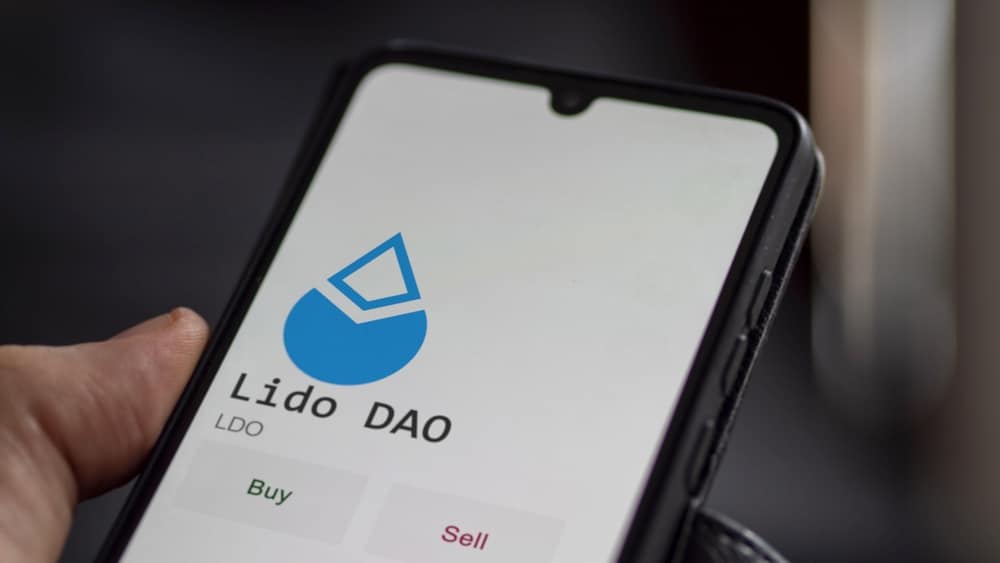
LayerZero Faces Backlash Alleging Frontrunning Lido Governance
LayerZero unveiled an upgraded integration involving three blockchains, though condemned by one decentralized finance (DeFi) project. The DeFi project considers a bridge too far for LayerZero.
The criticism traces to the recent announcement by LayerZero that it was integrating the wrapped version of Lido’s staked Ethereum (ETH) token. However, the team overseeing the cross-chain protocol faced hefty backlash lodged by the Lido community.
Lido Finance Challenges LayerZero Frontrunning DAO Governance
The wrapped stETH involves an ERC-20 version of the inaugural blend stETH, easing its reuse in other applications. The backlash arose from the decentralized platform Lido Finance regarded as a staking protocol. As such, the wrapped stETH version saw its integration by LayerZero on Wednesday across the BNB chain. Also, its integration extended to the Avalanche and layer-2 Scroll network.
The LayerZero is facing backlash from the Lido community, alleging the team circumvented the governance powers exercised to guarantee smooth operation. The community demonstrates that decentralized finance projects are run by seeking approval from members. The participating members within the decentralized autonomous organization(DAO) vote via the governance tokens. The Lido Finance protocol utilizes the governance token LDO.
Socket head of growth Lito Coen decried the move by LayerZero that ultimately overlooked LidoDAO’s governance process. The community wonders why LayerZero’s network expansion team launched the wstETH version on three blockchains, including Scroll, BNB chain, and Avalanche.
The community alleges that LayerZero simultaneously launched a governance proposal alongside the technical implementation to incorporate and transfer the bridge ownership to LidoDAO. Nonetheless, a LidoDAO representative indicated that the decentralized organization was unaware of such integration.
Lido Finance responded in a Thursday, October 26 tweet warning that the LayerZero bridge lacks endorsement, canonical, and audit by the Lido DAO. The staking protocol warned users to exercise extreme caution when utilizing the bridge.
Security Concerns in Using LayerZero
Besides frontrunning the governance, the Lido community harbors security concerns regarding LayerZero’s design. They consider LayerZoro to suffer complexity. A critical analysis of its architecture reveals broad strokes affirming the concerns raised by the community.
The bridging protocol integrates wstETH, typically availing it as the Omni-chain Fungible Token (OFT). The token standard allows the tokens from various networks to interact via the LayerZero.
The transfer of tokens involves creating new tokens within the bridged side. The supply varies relative to the assets’ amount bridged via LayerZero. In particular, if the user sends one wstETH token to Avalanche from Ethereum, the transaction involves a technically different token. Instead, LayerZero assumes the custody of the initial wstETH token via the smart contract. It mints an Avalanche-compatible representation.
The process allows the user to move back the representation to Ethereum, prompting LayerZero protocol to destroy the representation before returning the initial wstETH token. The process yields the mint-and-burn bridge mechanism that suffers several risks.
Hart Lambur, who, besides the LidoDAO community membership, cofounded the UMA Protocol, indicated that corrupting the messaging layer would result in unlimited minting of wstETH.
The DeFi protocol’s executive decries that the OFT-based tokens security is reliant on the native validators. Such differs from other layer-2 networks, including Arbitrum and Optimism, that incorporate wstETH into the ecosystem through the native bridge.
A tweet by an independent DeFi analyst on Wednesday, October 25, challenged the layer-2 blockchains to offer a trustless bridge to layer 1. Doing so with LayerZero could translate to losing the OFT.
DeFiYaco, a business development executive at LidoDAO, supports Arixon’s perspective that wstETH default mining should remain within the native bridge. He regrets that utilizing alternative bridge providers without firm ground adds the susceptibility to risk.
LayerZero Backtracking by Discarding Scroll Integration
The backlash from the community accusing LayerZero of frontrunning the Lido governance is making amends by backtracking on one integration. A representative of the LayerZero protocol responded to the proposal by LidoDAO’s governance that mandates preferences of native bridges and L2s. The recognition prompted the removal of the wstETH token previously integrated into Scroll Network.
The representative admitted they strongly agree and support the DAO’s preferences portrayed by users and protocol developers. Both parties favor using native bridges and not those created by LayerZero.
Editorial credit: Maurice NORBERT / Shutterstock.com




